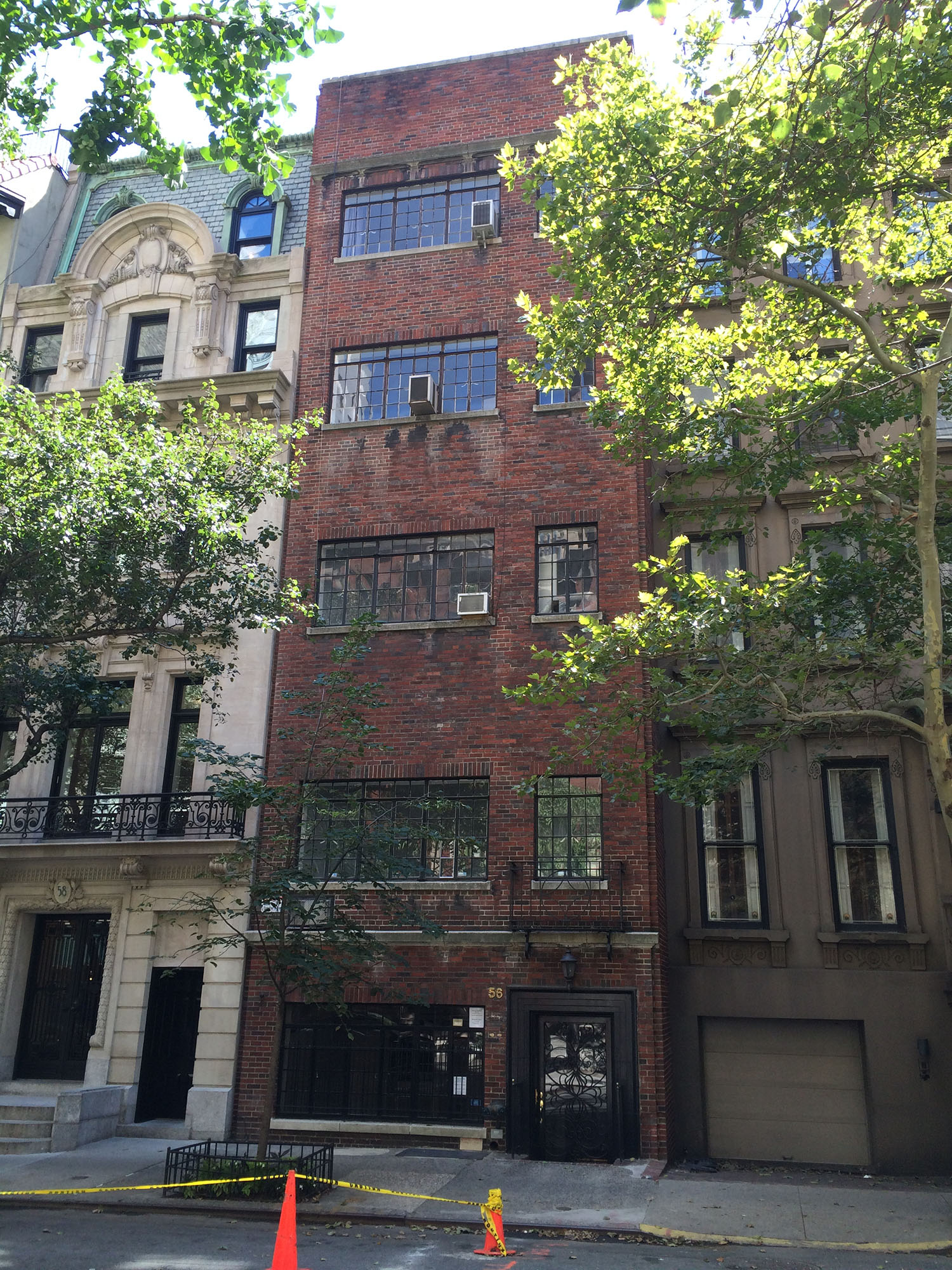Building Name
56 East 66th Street
Year(s) Built
1877-1878
Alterations
Henry T. Child, 1935
Designation
Upper East Side Historic District

Project Information:
A building built in 1877-1878 and altered by Henry T. Child in 1935. Application is to alter the front facade and areaway; demolish a rear ell; construct a rear addition and rooftop bulkheads; modify and create masonry openings; replace windows; and install railings.
CB8 Hearing: 07/13/15 (Approved)
LPC Hearing: 08/11/15 (Approved with modifications)
FRIENDS' Testimony:
While we appreciate the applicant’s carefully-studied tripartite arrangement of the façade and attention to neighborhood precedents, the Preservation Committee at FRIENDS found the overall design to be lackluster. The proposal attempts to walk a line between a faithful reproduction of a historic 19th century building and a contemporary expression of an Upper East Side townhouse, and ends up falling flat. It is a stripped down mimic of its limestone neighbors, and misses the opportunity to create something truly new.
For example, the proportions of the divided lights are off. The window configuration would be more successful if the ground floor window panes were square, while the panes in the midsection casement windows were rectangular as in their model at 24 East 78th Street. The lot-line window at the portico is also inappropriate.
Although the applicant is to be commended for using red brick on the rear façade, overall there is far too much glazing and not enough masonry. The three punched openings at the fifth floor which are being maintained should retain divided light windows as well. We also find the bronze spandrel panels to be an unnecessary embellishment for a secondary elevation.
Finally, 56 East 66th Street raises the question of how the Commission handles no-style buildings. Although the building was significantly altered in 1935, its current Proto-Modern brick façade and continuous steel casement windows are historic in their own right and not lacking in style. With over thirty years of perspective since the designation report was written, it may be time for a reconsideration of these buildings. We encourage the Commission to evaluate whether a no-style designation in this case should result in carte blanche for a new design.

